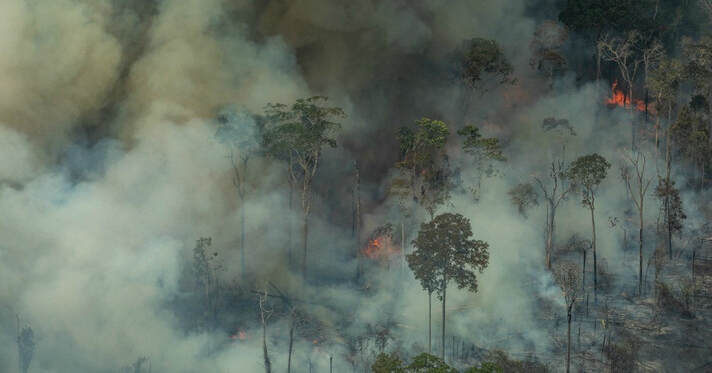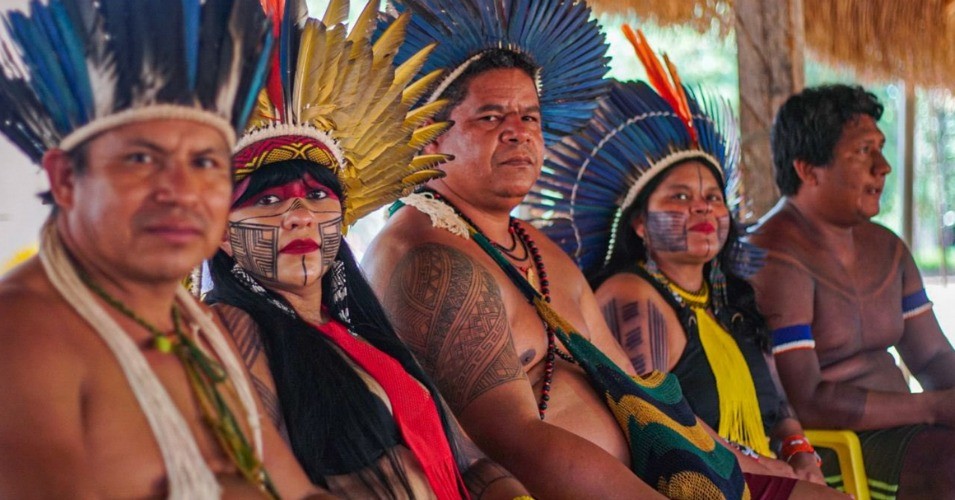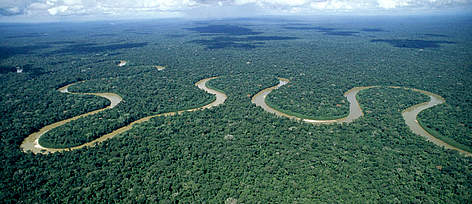|
By: Althea Ocomen All over the world, we can see the severe repercussions of the crisis of the Amazon rainforest. Everyone watched as the fires devastated and continue to devastate the trees and territory, a result of developers illegally clearing and destroying land by burning the rainforest. Because the Amazon provides 20 percent of the planet’s oxygen - earning it the nickname of the lungs of the Earth- many are now focusing on the detrimental and dangerous effects which the wounded rainforest could impact on the current condition of climate change. What many fail to see, is that these fires are already affecting the indigenous people residing in that territory. Climate Change is a destructive social issue- like several other social issues, the people who are the most affected are the marginalized indigenous people. So while residents in the first world and developing countries may not feel the disastrous impact of the climate crisis, those who have lived in the Amazon already have had their homes, source of income, and reserves damaged by developers to pave the way to agricultural businesses such as cattle ranches and palm oil plantations. "There are over 400 indigenous groups across the Amazon at large, several hundred of which are in the Brazilian Amazon, which is roughly two-thirds of the total surface area of the Amazon," Miller explains to Green Matters. "There are hundreds of groups, all of which have their languages, their customs, their ways of life. But there are also a lot of similarities between them — their relationship with the land, and in many ways, their commitment to protecting their territory." "Some of them are living in voluntary isolation, or, sometimes people call them 'uncontacted' indigenous people," Miller continues. "Brazil has the largest number of so-called uncontacted indigenous people. And these are the folks that are at-risk with forest fires and also other manifestations of the assault on the Amazon right now, including land invasion, illegal logging, and illegal mining."
The Bolsonaro administration is not enforcing and keeping environmental policies and protection for the Amazon Forest. The Brazilian government is slashing budgets and pushing to change the laws in favor of deforestation in the Brazilian Congress. In conjunction with when the fires are happening, the Brazilian government is proposing to weaken environmental rules. Bolsonaro has appointed the people who want to harm the rainforest as ministers. He has hired people who come directly from the same industries that they are supposed to regulate. Brazil legally does have laws that are protecting people of the Amazon written in their constitution, but they are simply not properly enforced. Because the current administration is not enforcing these laws, many indigenous tribes have been forced to respond to land invaders by protecting their territories on their own. Unfortunately, there are some indigenous people who no longer — if they ever did — rely on the government to protect their territory. It has been proven countless times how the administration and its policymakers have failed to place the safety of these marginalized as their priority, but instead found ways to lessen their protection. As a result, they organize guards to go out and patrol their territory to confront invaders and illegal loggers and miners and try to send them packing. This can be a pretty challenging thing for the indigenous people to do, given how violent the developers can be. This is how communities on the ground are protecting the Amazon and the environment, and in a sense, the frontline protectors of the climate. Indigenous people are central climate actors. They are the people who carefully protect the environment and are the ones who flourish their value. Indigenous rights in and of themselves are important and intrinsic — but in addition to their rights, they are crucial climate actors. They are putting their bodies on the line with these issues. They need our support and solidarity. One of the ways to make sure that the current forest fires are placed out and to change the economies which incentivized burning is through allowing the Amazon forest to remain with its rightful owners. It is important to put the forest management back in the hands of the indigenous people in order to encourage practices that help maintain the growth and health of the Amazon. This concept is not only true for the forest territory in the Amazon but many other forests as well. When national parks were formally introduced in the United States in 1916, it was under the misguided idea that lands were needed and required to be kept under pristine and undisturbed human activity. This ignored and invalidated the hundreds of years of management of these forests by the Native Americans. During these times, ecosystems evolved side by side with informal management by the native communities including wood gathering, grazing, and small scale agriculture, as well as low- intensity burns set to regularly clear brush and prevent larger, more intense fires. Prohibiting indigenous communities from managing today’s forests and territories has increased the likelihood and intensity of deforestation and burnings over time.
0 Comments
Leave a Reply. |
TUGIWelcome to Seeds for Thought, the TUGI Blog where we will be highlighting incredible stories of environmental activists and change makers, environmental news, and tips to living a more green and sustainable lifestyle. If you are interested in learning more about what we are doing on a monthly basis, subscribe to our TUGI Newsletter. Archives
May 2021
Categories |
TUGI
|
|



 RSS Feed
RSS Feed
